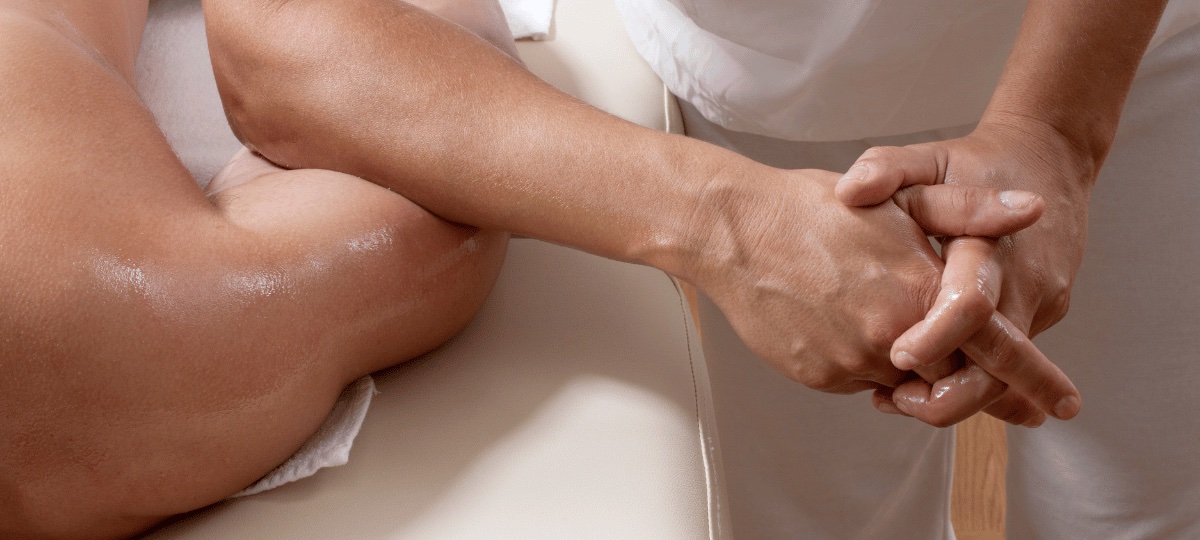Massage Therapy Journal
Myths, Massage and Research
How massage therapists can help separate fact from "massage lore."
Can massage therapy education reduce risk factors for occupational injuries?
By Martha Brown Menard, PhD, LMT, February 1, 2023

Can an experiential learning program for massage therapy students combined with measurement tools reduce ergonomic risk factors that lead to occupational injuries?
While the employment demand for massage therapists continues to increase, more massage therapists are leaving the profession due to work-related injuries. A previous industry study showed that 83 percent of respondents reported work-related pain in the wrist or thumb at some point during their careers, with 57 percent experiencing pain within the last 30 days, despite practicing self-care.
While existing massage therapy textbooks contain general information about body mechanics, there is little information included in most curriculums designed to teach students how to adapt these general principles to their individual work. This study examined whether an approach employing experiential and transformative learning concepts could be effective in reducing the risk level of injury using industry-standard ergonomic assessment tools.
Four cohorts of students who enrolled in and completed MASS 212—Kinesiology for Massage Therapists, a required course in the massage therapy associate of applied science degree program at the Community College of Baltimore County—were eligible to participate. The researcher, who also had ergonomics assessment certification training, acted as the instructor for all four cohort groups and collected the data as part of the course requirements.
Outcomes were measured using the Rapid Entire Body Assessment tool, or REBA, and the Rapid Upper Limb Assessment tool, or RULA, and were given to all participants prior to the start of the course and again after the course, with participants serving as their own controls.
Both tools contain a series of body-positioning pictures for each area chosen by a trained ergonomics analyzer and based on the analyzer’s observations of the job tasks of the individual worker being observed. The final assessment score was used to determine whether or not a need for ergonomic investigation and change in performing job tasks was warranted or needed further analysis and resolution to reduce potential injury risk.
Both tools provide a way to quantify potential injury risk and show how a job task is physically performed, identify problem areas that create unnecessary risk and promote the creation of solutions to help minimize risk for a job task.
Following the pre-test assessment, students were presented with their scores in the next class session. Discussion of the pre-test score and observation comments gave students an understanding of what elements in their body mechanics were of concern and/or performed well.
Over the course of the semester, students then participated in six unique in-class activities designed to help them refine and improve their body mechanics, including limitation of use of anterior hand (palm) while performing massage; preventing arm reach beyond perpendicularity; Tai Chi and energetic principles; development of a personalized self-care plan; using supportive manual tools; and variability with massage table height.
Twice during the semester, students were asked to write a reflection journal on their activity experiences with the exercises. Scores on the REBA and RULA were analyzed using the paired t-test while qualitative data was analyzed using content analysis.
A convenience sample of 17 students completed the course and the study. The paired t-tests showed statistically significant differences before and after the educational intervention, which were supported by the qualitative data from student journals. The results supported the study hypothesis that the individualized educational intervention reduced the risk of occupational injury as measured by the REBA and RULA.
Limitations of the study: The study sample is relatively small, and the researcher acted as both the person delivering the study intervention and as data collector and data analyst, which may have introduced some degree of bias.
Additionally, no longitudinal follow-up was performed to see the results of this intervention during the course of students’ careers as massage therapists to determine whether risk reduction translates into lower injury rates and increased career longevity.
Therapists who completed an educational program that emphasized specific, rigid and methodical treatment protocols may benefit from exercises that promote kinesthetic awareness and individualizing application of massage techniques to promote better body mechanics using ergonomic principles.
1. Anderson RB. "Improving Body Mechanics Using Experiential Learning and Ergonomic Tools in Massage Therapy Education." Int J Ther Massage Bodywork. 2018 Dec; 11(4): 23–31.
2. Blau G, Monos C, Boyer E, Davis K, Flanagan R, Lopez A, Tatum DS. "Correlates of injury-forced work reduction for massage therapists and bodywork practitioners." Int J Therapeut Massage Bodywork. 2013;6(3):6–13.